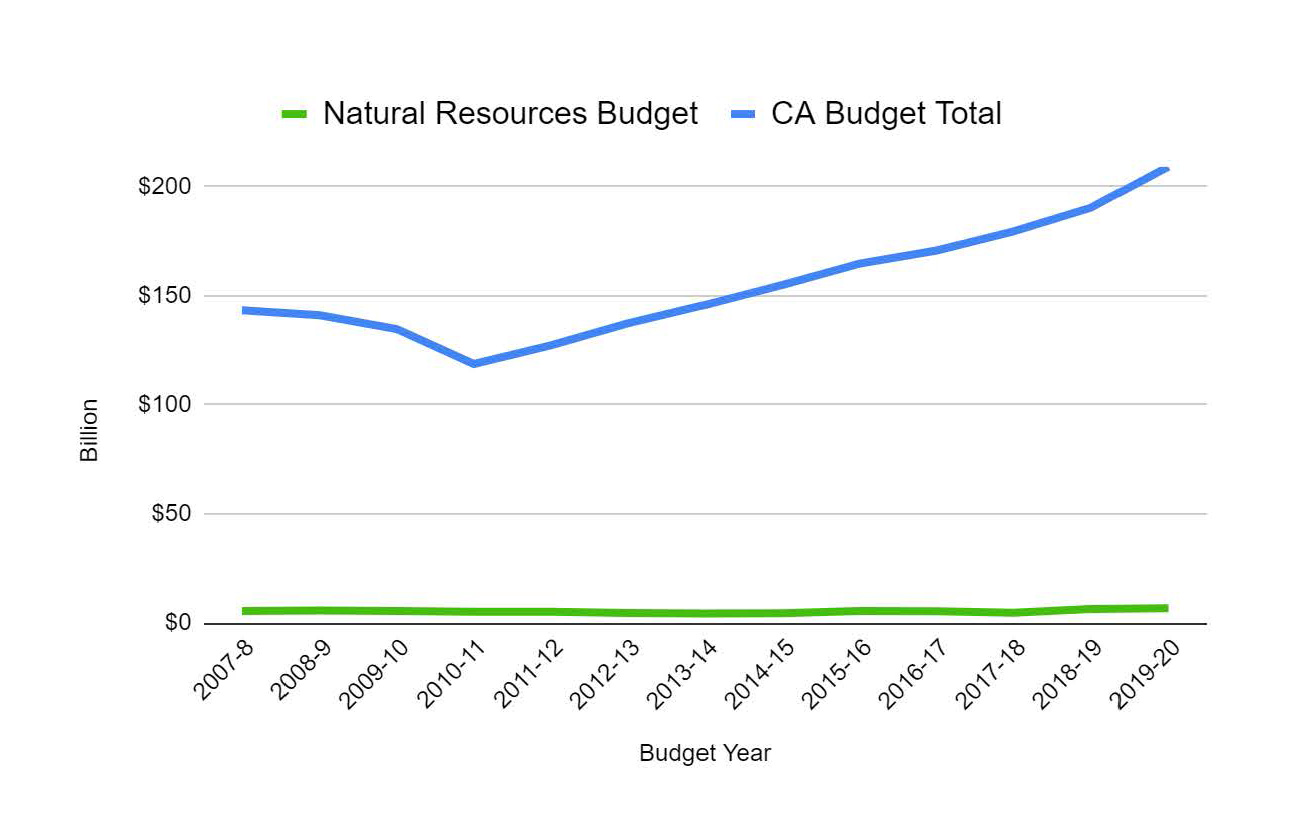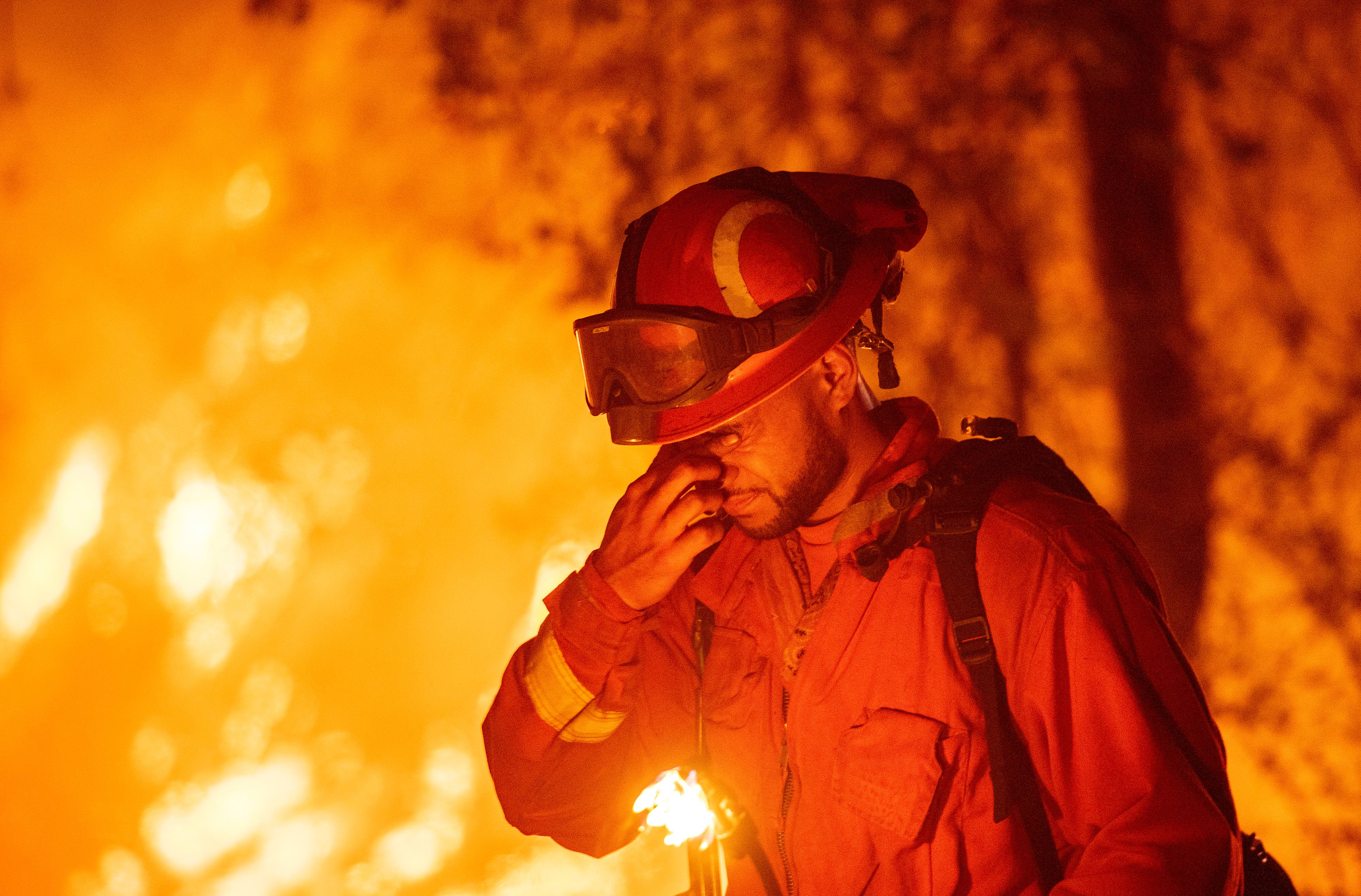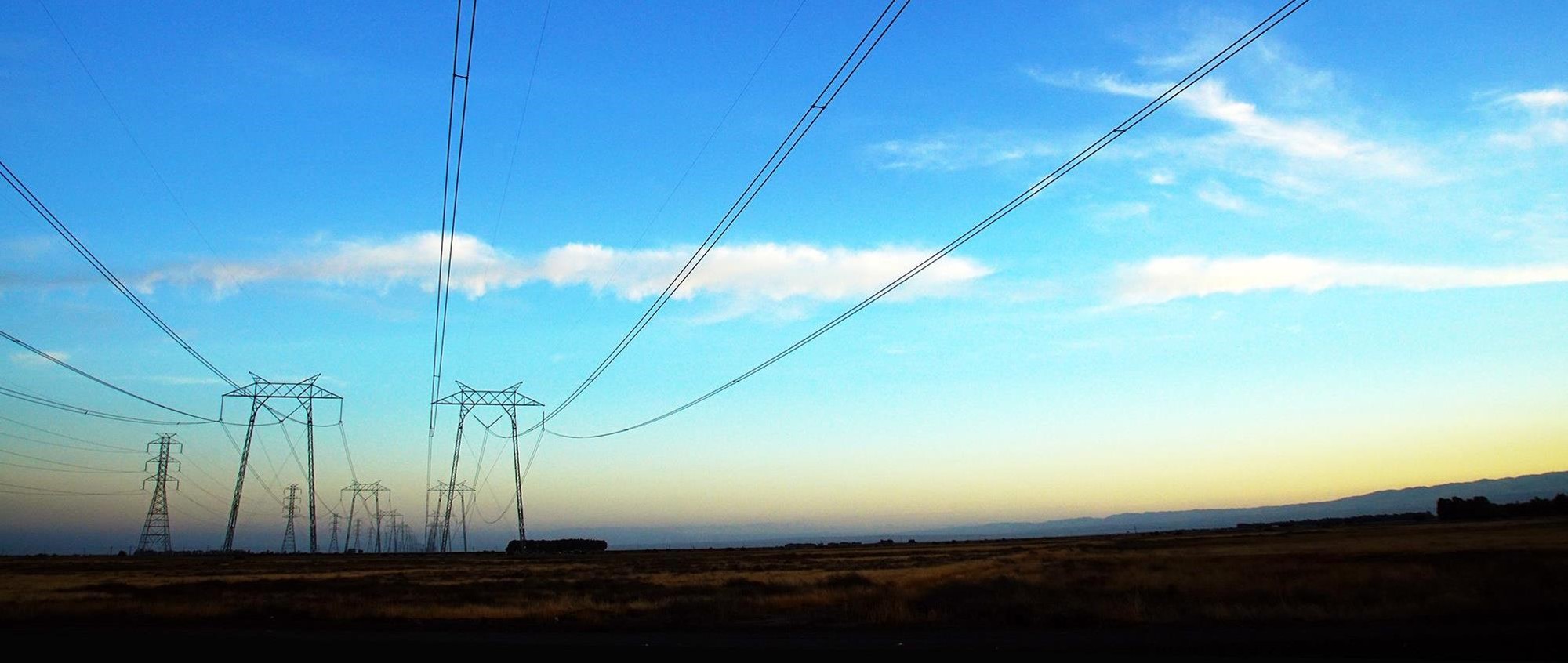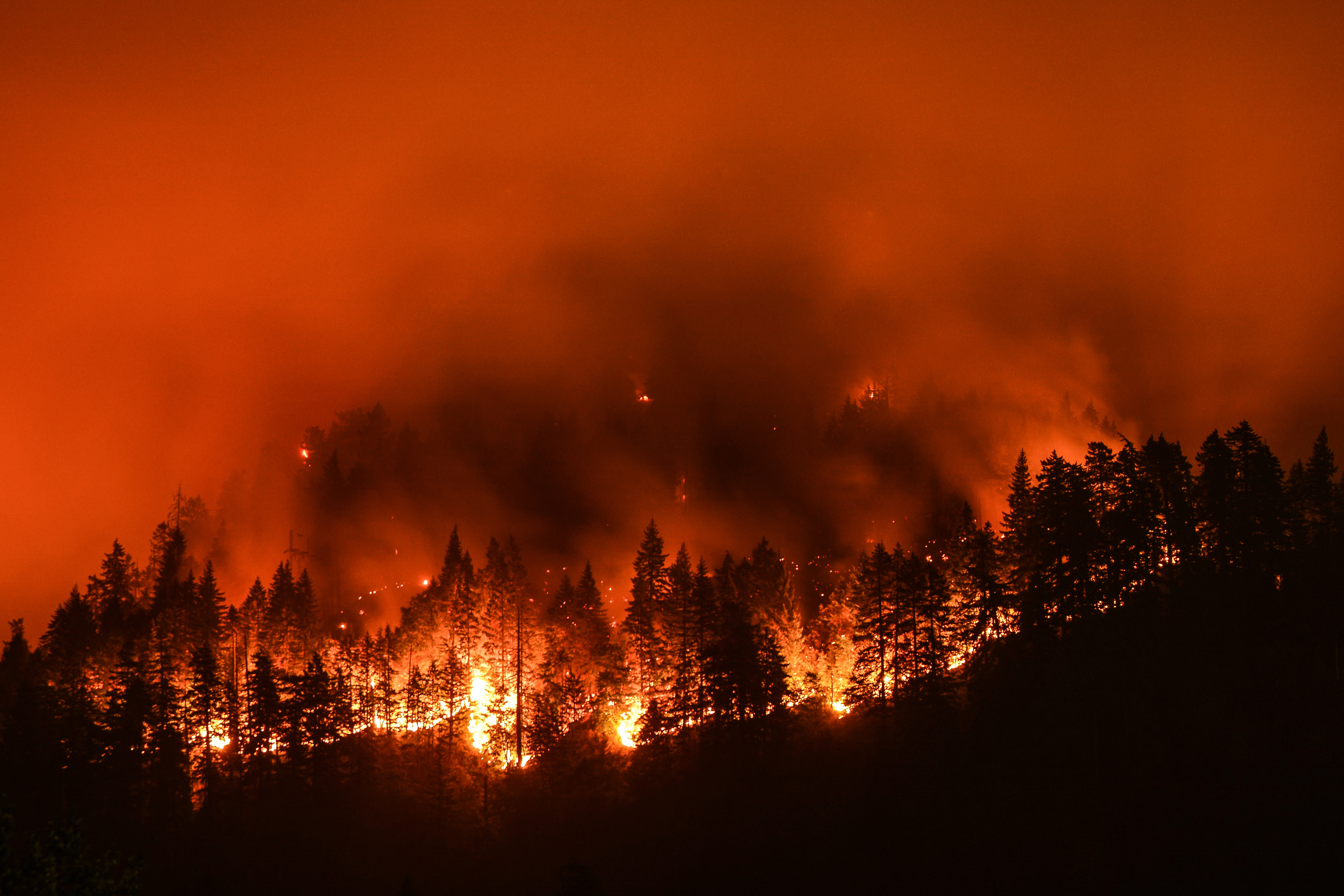Climate Change is Changeable
Support the Climate Resilience Bond and take a decisive step towards combating climate change in California.
California can’t afford to wait any longer to address the real climate risks now at our doorstep—fires, floods and sea level rise. In order to respond and adapt to the scale of this challenge, we need a comprehensive Climate Bond strategy that is aligned with clear funding.
TNC is hard at work advocating for a Climate Bond with these critical elements:
- Well-Funded: Climate change is changeable but only if we make a serious investment that is equal to the scale of the problem our state is facing.
- Engaged Partners: In order to ensure bond funds are used efficiently and effectively, we must identify the right agencies to manage the effort.
The Problem
California is one of the most climate-vulnerable states in North America. Wildfires, extreme heat, contaminated drinking water, flooding from sea level rise—the list of climate change related impacts in California is growing larger and the impacts more severe. Over the last decade, California has experienced some of the most extreme climate-exacerbated events in history:
- 5 of the 10 largest fires in history have occurred since 2010.
- The 3rd driest and 3rd wettest years in our state’s history occurred in the last decade.
- In 2015, snowpack levels in the Sierra Nevada (the source of one-third of the state’s drinking water) reached its lowest level in 500 years.
- Climate change has also brought an unprecedented loss of fish and wildlife, threatening biodiversity across California.
In order to change the trajectory of climate change and reduce the growing threats it poses to public safety, health and the environment, we must respond with bold and decisive action that reflects the magnitude of the problem our state is facing, a Climate Resilience Bond is an important step in the right direction.
Investing in a Green Future | Climate Resilience Bond
The Climate Resilience Bond would accelerate investments in smart climate resilience strategies to safeguard both human health and safety and the environment. The bond has two primary goals:
To address California’s immediate climate risks, including wildfires, contaminated water supplies and flooding
To better prepare and adapt the state for future threats, reducing the dire consequences of natural disasters in order to avoid the worst impacts of climate change
According to the California Natural Resources Agency’s Fourth Climate Assessment, if we continue on our business as usual path, the cost of climate change to California will reach $113 billion annually by 2050. With the knowledge that an investment in preventative measures now would not only protect people and nature, but also would save state agencies and California residents billions of dollars in future damages, California cannot afford to wait to invest in climate prevention and adaptation.
Natural resource spending in the California budget is insufficient to address our state’s critical climate vulnerabilities, resulting in growing risks to public safety, health and the environment. With only 3.1% of Governor Newsom’s proposed 2020-21 budget dedicated to natural resources (a decrease from the 2019-20 budget of over $1 million dollars), the Climate Bond is a critical tool to help fill the funding void.

If passed by the California legislature, the “Wildfire Prevention, Safe Drinking Water, Drought Preparation, and Flood Protection Bond Act” would be placed on the November 2020 ballot, giving voters the ability to support investments that would curb megafires and reduce the impacts of floods, droughts, excessive heat and sea level rise in California, including funding for home hardening and defensible space protection.
Below is a description of the key climate risks and funding solutions proposed in the Climate Bond.
What We Are Doing and How You Can Help
TNC is hard at work advocating for a comprehensive Climate Bond that both identifies the best solutions to address the diverse climate problems facing California and secures adequate funding to bring those strategies to life.
Critical elements include:
A well-funded bond: Climate change is changeable but only if we make a serious investment that is on par with the scale of the problem our state is facing. A well-funded bond aligned with other investments that meet our climate needs will ensure all of our critical categories are covered. If we reduce the bond amount, one if not all critical risk categories (wildfire, flooding/sea level rise, contaminated drinking water) will suffer, resulting in costly bailouts and unnecessary risks to human health and safety.
Identify key agency partnerships: In order to ensure bond funds are used efficiently and effectively, we must identify in the legislation the right agencies to guide implementation of the bond strategies. The following are three key partners:
-
The California Natural Resources Agency leads and coordinates the administration’s climate adaptation policy and its natural resources climate policy. It is the foremost authority on California’s natural and working lands, including rangelands, forests, woodlands, wetlands, grasslands, shrubland, farmland, riparian areas and urban green space. These lands cover more than 90% of the state and supply life-sustaining resources including clean water, air, food and fiber. With their potential to sequester carbon, reduce greenhouse gas emissions and increase the capacity for California to withstand inevitable climate impacts, these lands are a critical component of California’s integrated climate change strategy.
-
The Wildlife Conservation Board (WCB) protects, restores and enhances California’s spectacular natural resources for wildlife and for the public’s use and enjoyment, in partnership with conservation groups, government agencies and the people of California. Given WCB’s deep experience and a long history of effective partnership, they are best equipped to deliver funding to protect and help adapt wildlife to California’s changing climate. The protection and restoration of these public lands will provide important climate adaptation services for wildlife and people, increase carbon sequestration potential in natural and working lands and provide additional social, economic and environmental benefits.
-
California’s regional conservancies are charged with protecting and restoring large areas of land across the state and are critical to ensuring climate bond projects are delivered on the ground while maintaining a regional approach. For example, the California Coastal Conservancy (CCC) is leading the way to help natural resources and communities along California’s coast adapt to the impacts of climate change, such as rising sea levels and flooding. The CCC supports the use of natural infrastructure for coastal adaptation to sea level rise including wetlands, oyster beds, etc.
At The Nature Conservancy, we are actively working to create a climate resilient state for the benefit of nature and people. Please join us in supporting the Climate Bond, for the love of California.
More Climate Action Legislation
In addition to the Climate Bond, TNC is also sponsoring these key pieces of Climate Action related legislation:
Carbon Neutrality Bill (SB 1362) | Senator Stern: This critical bill helps put California on the path toward carbon neutrality, or net zero greenhouse gas emissions, by 2045. It directs the California Air Board to develop a comprehensive plan to identify how the state will achieve this goal by mid-century.
Climate Goal for California’s Natural and Working Lands (AB 2954) | Assembly Member Rivas: This legislation would establish a clear role for nature to help mitigate carbon dioxide emissions and build overall climate resilience by directing state agencies to establish a climate goal for the state’s natural and working lands in support of carbon neutrality.
Wildfires
Fires in California continue to set new records for the “largest,” “most damaging,” “worst air quality” and sadly, the “most deadly” we’ve ever seen. What’s causing this dramatic turn for the worse? It’s driven by many factors, including extreme weather, past land use decisions and a century of forest and wildfire mismanagement, leaving many communities and natural lands a spark away from catastrophe. The good news is that we can take action now to protect communities from fire and minimize risk as well as bring our fire adapted forests back to health.

Wildfire Prevention
It is critical that a climate bond has an allocation for wildfire prevention and community resilience. This would ensure:
Support for fire resilient communities by funding home hardening and defensible space protection
Curbing megafires and supporting healthy forests by investing in scientifically proven forest restoration methods including prescribed burning and ecological thinning
Better air quality by restoring the health of our forests and reducing the risk of dangerous fires that produce smoke emissions
Contaminated Drinking Water & Droughts
While we understand that clean water is a basic human right, an estimated 700,000 Californians can no longer safely drink water from their taps. But the alarming numbers don’t stop there: at least 6 million Californians get water from suppliers that have violated state minimum standards over the last 8 years.

Drought in California is another climate-exacerbated challenge. If snowfall continues at the current rate, reservoirs may be brimming over this spring, but scientists anticipate more major droughts in the future.
With advance planning and strategic investments, we can be better prepare to address drinking water issues and future drought.
Safe Drinking Water
It is critical that a climate bond has an allocation for safe drinking water, protecting water supply and water quality from climate risks. This would support:
Sustainable groundwater management to ensure there is fair and balanced distribution of water for people and nature
Investment in drought protection projects so that we have a robust water supply during times of drought
Investment in groundwater recharge to replenish aquifers and offer benefits like wildlife habitat
Flooding and Sea Level Rise
California’s coast has risen at least 6 inches since 1950, and current trends show sea level rise is speeding up. This increase is in large part caused by melting ice from glaciers.
Research shows that if we don’t intervene, up to 67% of Southern California beaches may completely erode by 2100; statewide damages could reach nearly $18 billion from the effects of sea level rise on residential and commercial buildings.

Protecting Coastal Lands
An allocation in the climate bond and strategic investments in nature-based solutions are critical to mitigating climate change risks on our coasts and oceans. This would protect:
People and structures from floods with onshore investments including wetland restoration and offshore investments like kelp bed restoration, while providing multiple other benefits like wildlife habitat, groundwater recharge, etc.
Communities along California’s coast by helping them prepare and adapt to the impacts of climate change, such as sea level rise
Fish and Wildlife Decline
Fish and wildlife populations have been steadily declining due to human pressures, and climate change is now escalating that trend. Many of California’s native freshwater species are listed as endangered or considered vulnerable to extinction. More than 80% of California’s fish are at risk. If current trends continue, many of our native fish will disappear in our lifetime.

Protecting Fish and Wildlife
It is critical that a climate bond has an allocation for protecting fish and wildlife from climate risks. This would ensure:
Funding to the Wildlife Conservation Board to support climate resilient fish and wildlife habitat
Innovative ocean and marine fisheries management
Climate change is increasingly becoming more destructive and costlier for California. We cannot afford to wait. Investing in the Climate Resilience Bond is critical to ensuring a more sustainable planet and future.

Let's Talk Climate
Download your free Let’s Talk Climate How-To Guide today and take a step to help change the course of our planet.
Make a Difference in California
Together, we can achieve transformative change on a scale that’s attainable—for California, and for the world.



